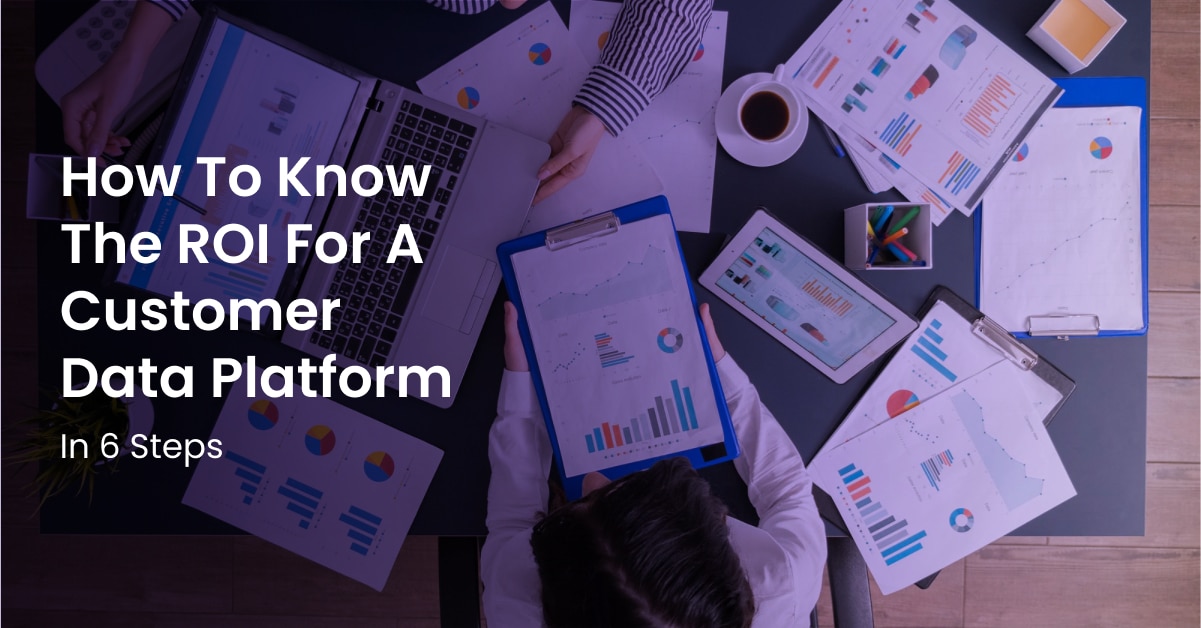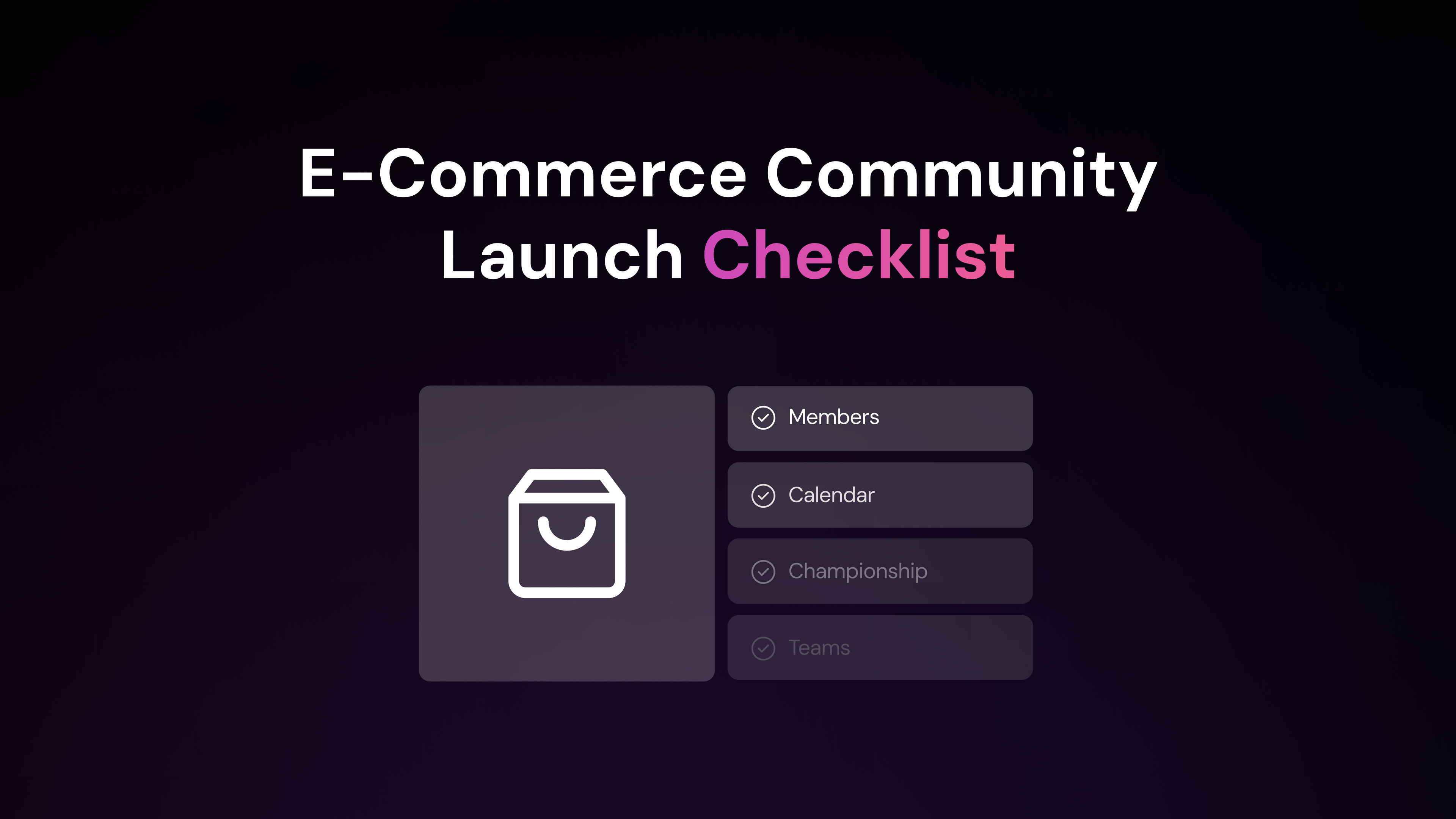Adding a customer data platform to your sales and marketing workflow takes some work. So, it’s worth asking the question: is it worth the effort to use a CDP? To find the answer, let’s look at ways to measure the ROI of a customer data platform.
Calculating Customer Data Platform ROI Step By Step
In principle, deeply understanding customer behavior should drive higher revenue. Achieving that result takes time and the right approach. Let’s start by gathering the correct numbers.
1) Know Your Sales And Marketing Numbers Before Using A CDP

To fully understand the impact of a customer data platform on your business, it is crucial to gather some numbers. Precisely, measure these numbers before using a CDP and then look at them afterward.
- The number of leads. This measure should be the easiest to track – count the number of leads you typically gain per month. If possible, look at six to twelve months of data and take the average.
- Lead quality. There are different ways to determine lead quality. For example, you might measure the proportion of marketing-qualified leads that convert to sales-qualified leads.
- Ad campaign effectiveness (e.g., cost per lead). Running a lead generation advertising campaign is much easier when you deeply understand your audience. If you’re just getting started, you are likely to have a high cost per lead. With better data, you can bring this figure down over time.
- Sales cycle time. Measure the time between a lead’s first encounter with your business and purchase. While external factors, like the overall economic environment, also impact this figure, it is still intelligent to track.
With these data points in mind, let’s proceed to the next phase of the ROI measurement process.
2) Install and configure your customer data platform.
In this step, install and configure your customer data platform. For this platform to deliver maximum value, take the time to review your customer data for quality. The ROI from the CDP will be low if you start with poor data.
To assess your customer data quality, consider the following points:
Do you have accurate information about customers and how they became customers?
Take a list of your 100 most recent customers and look at the customer journey. Ideally, your CDP should help you to understand their experience. For example, did the majority of prospects interact with sales only after attending a virtual event? If you don’t have this customer data yet, start planning to gather it. Customer surveys and automated tracking can help to address these points.
Without the ability to accurately trace the customer journey, measuring marketing effectiveness and making data-driven decisions about what to focus on next is difficult.
Are you gathering zero-party and first-party data from customers and prospects?
Third-party platforms like lead providers and social media have a role to play. However, these sources are limited. They don’t tell you what a given person thinks or feels about your specific brand. A fully implemented customer data platform can equip you with these insights.
Zero-party data is data that customers decide to share with an organization like product preferences in a survey. For example, you might run a survey to customers about what websites and brands they like the most. Responses to this survey would be zero-party data. First-party data, on the other hand, is a bit different. It is data that a customer agrees to provide by using your website, interacting with your emails, and so forth. Regularly gathering these data points is an important way
Are you using a scoring system?
Scoring becomes more important as you scale up your lead generation and marketing efforts. Large companies develop higher sophisticated models to score leads, but that’s not the only way. You can take a simpler approach if you’re just getting started. For example, you might distinguish between new prospects (i.e., they have been on your email list for less than five days), highly engaged leads (i.e., they have been on your email list for 30 days and have participated in an online event) and customers (i.e., they have purchased in the past 12 months). Classifying prospects into these three categories will help you make better decisions about using your marketing resources.
With this foundation, you’re ready to install your customer data platform.
3) Generate first-party data for your customer data platform
On its own, a customer data platform does not produce a return on investment. To achieve results, there are two more crucial ingredients. First, it’s vital to feed more data into the platform regularly. Second, taking sales and marketing actions is vital based on what you find in the CDP. Let’s start with the first ingredient.
Generating a steady stream of first-party data is one of the best ways to make your CDP more valuable. For most brands, it makes sense to focus on getting more people to your website and ensuring they have an engaging experience. A website visitor that arrives and leaves a few seconds later will not give you much to work with.
There are a few ways to make your website more appealing to customers. You start with a foundation of design, fast technology, and a simple user interface. Next, publish content that directly speaks to your customers’ needs and problems. Finally, enrich your website by transforming it into a virtual events platform using a live blog or a live chat experience. Taken together, technology, content, and community experiences will make your website more appealing. As website visitors keep returning over time, you will have more opportunities to gather data about their preferences.
Once your website generates a significant amount of first-party data, how do you transform that data into valuable insights? That’s what we’ll cover in the next section.
4) Develop new sales and marketing ideas based on CDP data
Your next step is to develop new ideas based on the data you’re seeing in your customer data platform. Success requires both art and science. The art is coming up with sales and marketing ideas regularly. The science is grounding those ideas in the data available on your platform. Let’s illustrate this principle with two examples.
Online publisher
A digital publisher is concerned about subscribers not renewing their subscriptions after the first year. To solve this problem, the publisher reviews their CDP and looks for patterns between people who renew their subscriptions and those who do not. The publisher may notice that 90% of renewing subscribers access paid content once per week and have attended at least two subscriber-only online events.
Based on these patterns, the publisher decides to test the following marketing campaign ideas:
- Highlight the “best article of the week” to subscribers. The objective is to make it easier for subscribers to use – read just one article.
- Improve virtual events with special guests. To make subscriber-only virtual events more enticing, the publisher invites celebrity guests to a “Ask Me Anything” session to make subscriber-only virtual events more enticing.
After developing these marketing campaign ideas, the publisher can measure the ROI of the campaign using their customer data platform.
Ecommerce company
A clothing e-commerce company is finding it difficult to achieve a reasonable return on its online advertising campaigns. By using the CDP, the marketing manager quickly discovers the problem. Many customers buy only when the company offers discount codes and never buy again. Fortunately, the company has noticed that customers who come through referral campaigns (e.g., Instagram influencers creating sponsored posts) seem to lead to ongoing campaigns.
The e-commerce company developed a few new marketing campaign ideas based on these insights.
- Increase budget allocation to influencer marketing campaigns.
- Change the creative focus for paid advertising campaigns. Instead of advertising a discount offer, new campaigns take advantage of holiday promotions (e.g., back-to-school season).
- Increase content marketing campaigns with partners to drive more referral traffic.
5) Gather the right data for a marketing ROI comparison.
If you’ve followed the process, you’ve installed a customer data platform, gathered new data, and implemented some new marketing ideas. Now, you can compare your marketing effectiveness before and after using the CDP.
To avoid confusing data, aim to make the pre-CDP and post-CDP implementation comparison as similar as possible. For example, focus on the same period (i.e., January to July of this year when you had the CDP vs. January to July of the previous year before you had the CDP).
Aim to exclude other factors that might significantly skew the results to the degree possible. For example, if there have been significant changes in the monthly marketing budget (e.g., $10,000 per month last year vs. $15,000 per month this year), be mindful of those changes.
6) Measure the ROI of your customer data platform
In this step, you’ll directly compare the results achieved before using the CDP and after using the CDP. If you’ve been feeding high-quality data to the CDP and making business decisions based on CDP insights, you’re likely to see a substantial improvement in CDP return on investment. In this case, take a moment to celebrate with your marketing team! You’ve successfully leveraged data insights to grow your business!
What if the return on investment results aren’t that exciting? That’s entirely possible! In this situation, remember that marketing is a work in progress. Learn what you can from the campaigns that didn’t work out and try something new.
Three Ways To Improve Customer Data Platform ROI
The following strategies will help you to get better results from your CDP. While each strategy is distinct, you’re likely to get better results using multiple strategies.
1) Look For Missing Customer Data
Missing key data points is a crucial reason customer data platforms provide limited results. For example, your focus might be on gathering data from website users. However, if the majority of customer conversations come from sales calls or social media, you might be missing key developments. Ensure your customer data platform gathers information from your website, social media, and key offline channels.
2) Validate Data With The Sales Team
For B2B companies, completing the transaction requires the sales team. Few customers are willing to make a $10,000 or $100,000 purchase without the chance to speak with a salesperson and get answers to their questions.
There are a few ways to validate your CDP insights with the sales team. Start by looking at reports and reports from your customer relationship management (CRM). For example, look at the most recent 10-20 completed sales. Does the customer journey involve multiple touchpoints with sales representatives? If so, you might be missing those interactions in your CDP.
In addition to reviewing reports, make the time to speak with your sales colleagues. They’re emailing and calling customers every week. They can give you insights into the relevance of marketing materials (e.g., “customers loved the state of the industry report we released this year in January – can we produce more reports like that?”).
3) Take More Chances
The final way to get better results from your customer data platform is to take more chances. Specifically, we often see people gather plenty of data from customers and prospects and look at the patterns. However, some marketers are reluctant to set aside their preferences and take a risk based on what the CDP is telling them. For example, your CDP might show that video customer stories lead to better conversions. Yet, recording customer videos are often quite labor-intensive and require permission from multiple parties. Despite these challenges, it may be time to invest more in creating these assets.
How To Get More Value From Your Customer Data Platform
You’ve seen that gathering data from a customer data platform is a powerful way to get more conversions and increase engagement. Ensure you have the right technology to gather and import first-party data into your systems to make the most of your platform. Arena Personas is a powerful tool to help you use first-party data to better segment your audiences and improve marketing efficiency.



